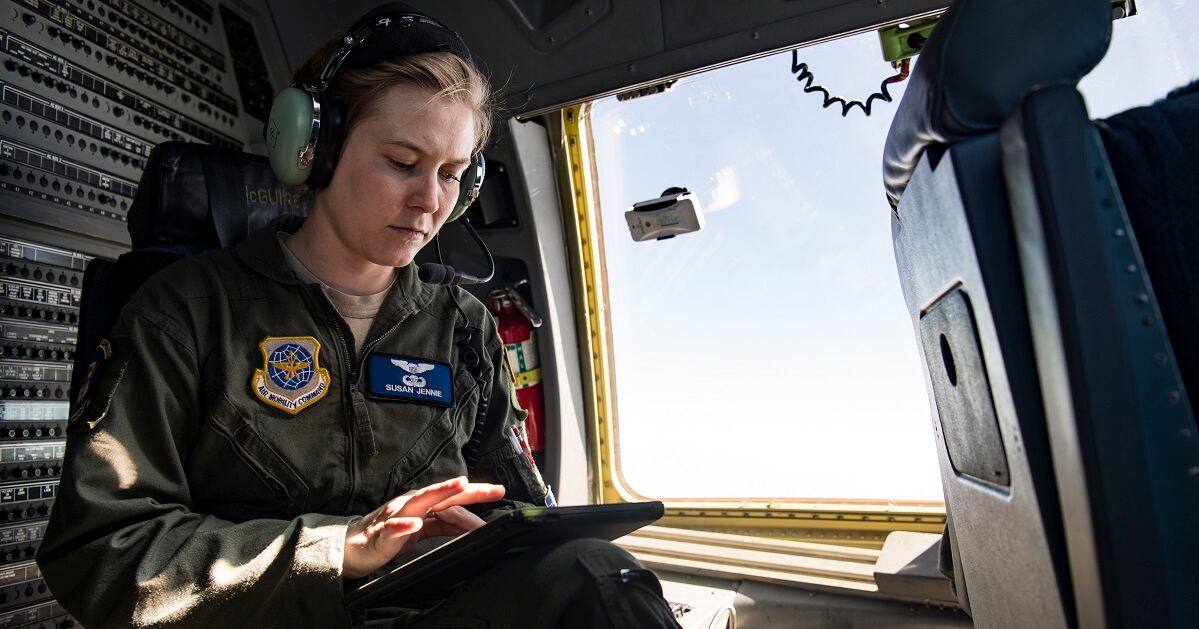The Air Force is planning to roll out a series of medical teams focused on treating active-duty airmen and getting them able to deploy once again.
The Air Force Medical Reform model will stand up these provider care teams and align them with operational medical readiness squadrons in an effort to improve airmen’s deployability, the Air Force surgeon general said in a Wednesday release.
These teams will be able to “holistically” treat airmen and reach out to them, instead of waiting for them to seek out medical care. They will pay visits to airmen in their duty locations and try to understand what personal and workplace challenges they face, the release said. They will also work with airmen’s leaders to help manage their care and minimize their amount of down time due to medical issues.
The goal: To cure or otherwise resolve any lingering health-care issues that may keep airmen from being able to deploy in support of the Air Force’s warfighting mission — which could end up saving some of these airmen from being separated.
At the same time, the Air Force said, non-active-duty patients such as family members and retirees will be handled by separate provider teams, aligned to a health care operations squadron, the release said.
“This new structure optimizes both [active-duty and non-active-duty] functions and allows us to return airmen back to full mission capability as quickly as possible without [decreasing] care to our beneficiaries,” said Lt. Col. Robert Corby, chief of medical manpower and personnel for the surgeon general’s office. “Restructuring where care is delivered lets our providers focus on each group to improve the quality of care, create efficiencies and most importantly, get injured or ill airmen back into the fight more quickly.”
Air Force Medical Service plans to first roll out the new medical organization model to 43 Air Force military treatment facilities within the continental United States, the release said. But it will not, at first, include medical centers, hospitals, ambulatory surgical centers, graduate medical education facilities, overseas military treatment facilities or limited-scope facilities.
RELATED

The Air Force, as well as the other branches of the military, is increasingly focused on making sure more troops are able to deploy, particularly by giving them an ultimatum: Return to deployability status in 12 months, or run the risk of being kicked out of the military.
In February, the Air Force officially enacted its deploy-or-get-out policy, ordered by former Defense Secretary Jim Mattis, which for the first time set a standard length of time for determining when a non-deployable airman may need to be separated. The Air Force said at the time that an average of roughly 34,000 airmen were non-deployable for any length of time, mostly for medical reasons, during the last few months of 2018.
However, very few airmen may actually be at risk of separation. In February, the Air Force said that due to exemptions, fewer than 1,000 airmen could be separated, although that number did not include an unknown number of airmen referred to the Disability Evaluation System.
In March, defense officials told lawmakers no service members had been forced out by that point.
The Air Force based the new model on a pilot program at the 366th Medical Group at Mountain Home Air Force Base in Idaho. Last summer, the 366th reorganized into two squadrons, hoping to return airmen to duty as quickly as possible.
When the program began, the 366th said, more than 400 airmen were considered “non-mission capable,” but six months later, that number was cut by nearly a quarter.
“Our provider teams focused relentlessly on getting airmen back into the fight,” said Col. Steven Ward, 366th group commander, in the release. “It was a real culture change for our provider teams, focusing just on airmen and building relationships with their assigned squadron and leadership. That narrow focus really helps providers get to know their patients and solve health problems before they can negatively affect the mission.”
Stephen Losey is the air warfare reporter for Defense News. He previously covered leadership and personnel issues at Air Force Times, and the Pentagon, special operations and air warfare at Military.com. He has traveled to the Middle East to cover U.S. Air Force operations.




